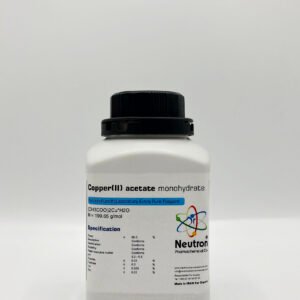tris base
| Chemical formula | C4H11NO3 |
| Density | 1.353 g/cm3 |
| Molar mass | 121.14 g/mol |
| HS Code | 29221980 |
| CAS number | 77-86-1 |
| Storage | Store at +15 to +25 °C |
| EC number | 201-064-4 |
| SDS | available |
| RTECS | TY2900000 |
| R phrase | R 36/38 |
| Odour | odourless |
| Form | solid |
| Color | colourless |
| p H value | 10.2 – 10.6 (6 g/l 20°C) |
| Solubility in water | 800 g/l (20°c) |
| Melting point | 169 – 172 °C |
| Boiling point | 219 – 220 °C |
| Assay | 99.8 100.1 | % | |
| Description | Conforms | ||
| Identification | Conforms | ||
| Solubility | Conforms | ||
| In water insoluble matter | ≤ | 0.005 | % |
| Absorbance @ 290 nm | ≤ | 0.2 | % |
| Chloride | ≤ | 0.001 | % |
| Sulphate | ≤ | 0.005 | % |
| Heavy metals | ≤ | 0.0005 | % |
| Iron | ≤ | 0.0005 | % |
| Sulphatad ash | ≤ | 0.05 | % |
| Water | ≤ | 0.5 | % |
Tris base (Tris(hydroxymethyl)aminomethane) is a white crystalline organic compound widely used as a buffering agent in biological and biochemical research. It is commonly referred to simply as “Tris” and is valued for its stability and non-reactive nature in physiological pH ranges.
🏭⚗️ Production
Tris base is synthesized industrially by the reaction of ammonia with formaldehyde, followed by further hydroxymethylation steps to form the final compound. The process results in a solid, stable product suitable for use in laboratory and pharmaceutical applications.
🔬 Properties
Tris base appears as a white, odorless crystalline powder. Its chemical formula is C₄H₁₁NO₃, and it has a molar mass of approximately 121.14 g/mol. It is highly soluble in water and has a pKa of about 8.1 at 25°C, making it ideal for buffering solutions in the pH range of 7.0 to 9.0. Tris is temperature-sensitive, and its pH buffering capacity can shift slightly with changes in temperature.
🧪 Applications
Tris is most commonly used as a buffer in molecular biology, biochemistry, and cell culture laboratories. It is a key component in many buffer systems such as TAE and TBE, used for electrophoresis of nucleic acids. Tris is also used in protein purification protocols and as a component of buffers in PCR, DNA extraction, and enzyme reactions.
⚠️ Safety
Tris base is generally regarded as safe for laboratory use and has low toxicity. However, it may cause mild irritation to the eyes, skin, or respiratory tract upon prolonged exposure. It should be handled with standard laboratory precautions and stored in a cool, dry place, sealed tightly to avoid moisture absorption.





